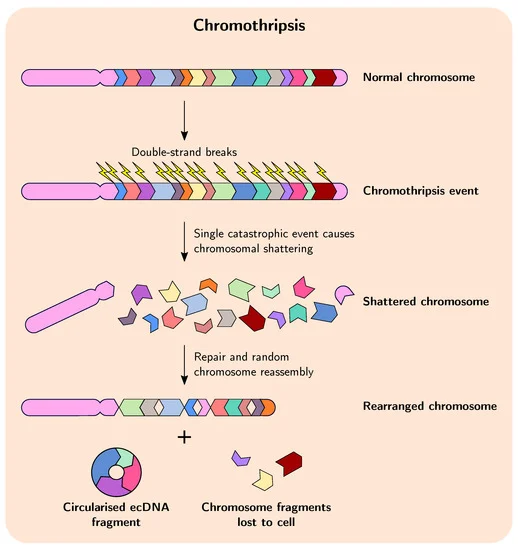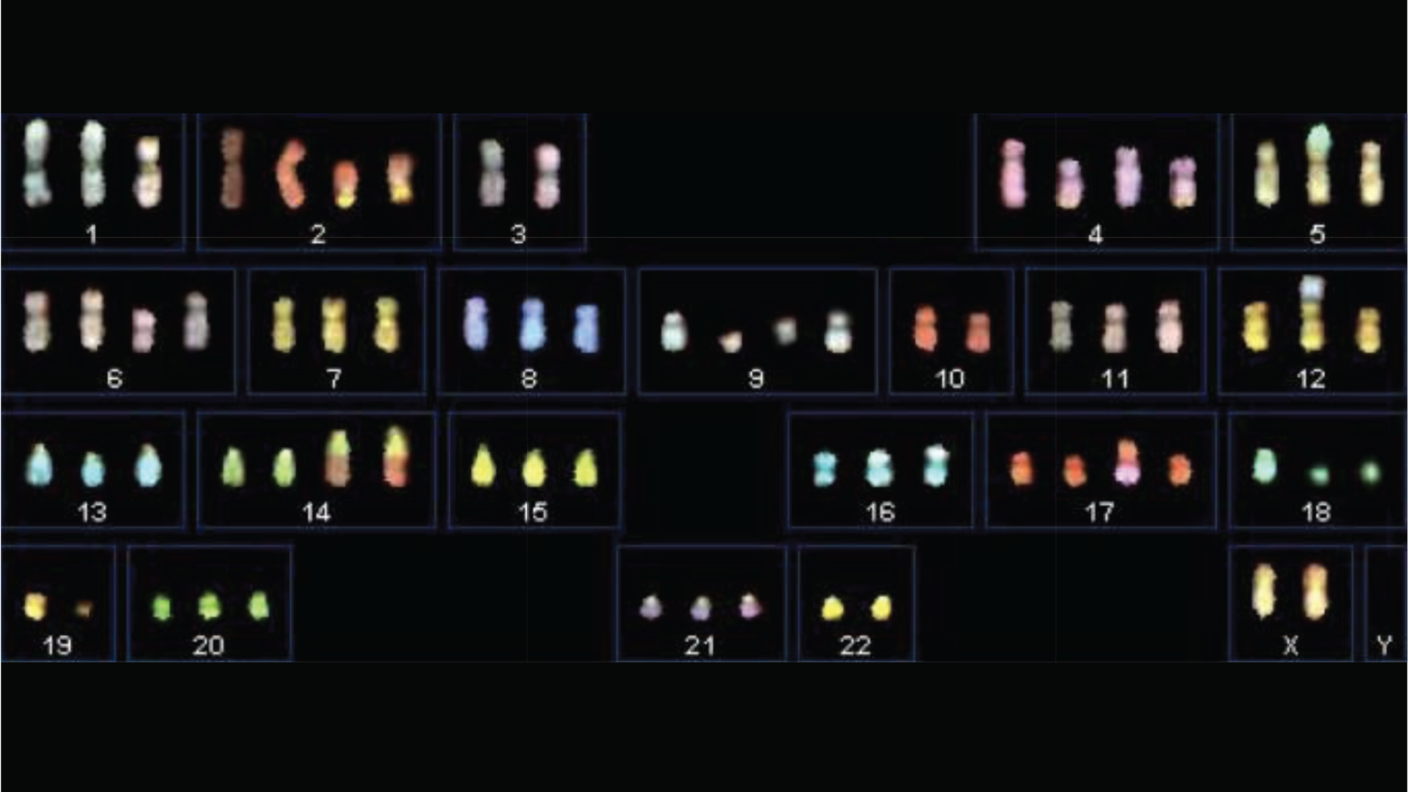Strategy May Prevent Tumor Resistance to Targeted Cancer Therapies
, by Edward Winstead
Many cancers that respond to targeted therapies eventually become resistant to the drugs. When these drugs stop working, patients often have few, if any, treatment options.
A new study suggests that it may be possible to prevent some cancers from ever becoming resistant to targeted therapies. The research focused on metastatic melanoma. Several targeted drugs are standard treatments for this aggressive form of skin cancer.
When cancers are treated with targeted therapies, some tumor cells may survive. As the surviving cells recover, they will once again start to grow and divide. In the process, the cells may acquire genetic changes that allow them to escape the effects of targeted drugs.
In the new study, researchers identified a mechanism by which cells develop the genetic changes, known as extrachromosomal DNAs (ecDNAs) and complex genomic rearrangements, needed to acquire resistance to targeted drugs. They discovered that a molecular process within the cell called non-homologous end-joining (NHEJ) may be important for these specific genetic changes to take place.
In healthy cells, this NHEJ pathway helps repair specific types of damage to DNA. But some melanoma cells appear to rely heavily on the NHEJ pathway to produce extra copies of genes that may be responsible for drug resistance, according to results published in Cancer Discovery on January 26.
“Cancers are able to figure out the best ways to get around the effects of a drug by undergoing molecular evolution,” said study investigator Roger Lo, M.D., Ph.D., of the UCLA Jonsson Comprehensive Cancer Center. “Inevitably, cancer cells capable of generating many versions of themselves will chance upon certain genetic variants that are able to resist a therapy.”
A new approach to a daunting clinical problem
Scientists have been trying to develop ways to identify vulnerabilities in resistant tumors that would make these tumors sensitive to treatments. But progress has been limited by the genetic diversity, or heterogeneity, of cancers.
Finding treatments for resistant cancers “is a daunting clinical problem,” said Dr. Lo, noting that many pathways in cells can lead to drug resistance.
Some patients may have more than one type of resistant tumor, and in each resistant tumor different pathways may be responsible for the resistance. “Unfortunately, there is unlikely to be a single effective strategy for treating the heterogeneous resistant tumors in these patients,” Dr. Lo said.
Dr. Lo and his colleagues decided to take a fresh look at the problem by analyzing the genomes of cancer cells as the cells became resistant to targeted drugs.
“We wanted to get a sense of what was changing at the genomic level as resistance developed,” Dr. Lo explained. “If we knew what had changed in the genome, we thought we could identify the mechanisms that were giving rise to genetic changes associated with resistance.”
He added, “We thought it might be more fruitful to understand the causes rather than the consequences of resistance.”
Focusing on melanoma cells with a common BRAF mutation
For their genomic analysis, the researchers used cancer cells from patients with metastatic melanoma. The cells had one of two specific genetic changes, BRAF V600 and NRAS Q61, which cause uncontrolled cell growth and are present in 70% of metastatic melanomas.
Several combinations of targeted drugs are already standard treatments for melanomas with BRAF V600 mutations. In most people, however, the tumors eventually become resistant to these treatments. Targeted therapies for melanomas with NRAS mutations are not yet available.
To investigate the biology of resistance, Dr. Lo and his colleagues sequenced the genomes of the melanoma tumors immediately after the cells were exposed to a targeted therapy combination for tumors with BRAF V600 mutations. To see how the genomes continued to change over time, the researchers repeated the sequencing after the tumors had stopped responding to the drugs.
In response to the targeted therapies, the researchers found, the genomes of some melanoma cells experienced a process known as chromothripsis. When this happens, bits of DNA can drop out of chromosomes and become restitched into stand-alone circular molecules called ecDNAs.
Cancer cells can produce many copies of these ecDNAs—in some cases up to 100 copies. ecDNAs are an efficient way for cells to increase the number of copies of certain genes and amplify the activity of these genes.
“We believe that when cells are treated with targeted therapies, certain parts of the genome will undergo a process of shattering and restitching,” said Dr. Lo. As a result, key genes that drive resistance may be present in ecDNAs in large numbers.
The NHEJ pathway, he added, appeared to play a critical role in the restitching.
Preventing drug resistance in mice
After identifying the possible role of the NHEJ pathway and ecDNAs in drug resistance, the researchers tested a strategy for blocking the NHEJ in cells and in animal models. They used a drug that inhibits a protein called DNA-PK, which is essential for the operation of the NHEJ pathway.
In mice implanted with melanoma cells bearing the BRAF V600 or the NRAS Q61 mutation, the DNA-PK inhibitor delayed or prevented the development of resistance to targeted drugs.
“When you inhibit the NHEJ pathway, the cancer cells do not get a chance to become resistant to the BRAF- or NRAS-targeted drug,” said Sundar Venkatachalam, Ph.D., of NCI’s Division of Cancer Treatment and Diagnosis, who was not involved in the research.
“This is an important study that addresses the significant clinical problem of resistance to targeted therapies,” Dr. Venkatachalam continued. “The results show that cancer cells are hijacking their DNA-repair machinery for their own benefit.”
The researchers also found that the NHEJ pathway might play a similar role in some lung and pancreatic cancers. “The strategy of trying to prevent resistance might be applied to other types of cancer if the molecular mechanisms that lead to drug resistance involve the NHEJ pathway,” Dr. Venkatachalam said.
Developing a clinical trial
Dr. Lo and his colleagues are developing a clinical trial to test the DNA-PK inhibitor in patients with melanoma. The study will see whether giving the DNA-PK inhibitor with targeted therapies can help delay or prevent tumor resistance.
“As the number of targeted cancer drugs continues to grow, the problem of resistance will also expand,” said Dr. Lo. “For our patients, there is a pressing need for new ways to address the problem.”

